We are often asked the question, “What is laminated glass?” Laminated glass is a particularly valuable construction material, due to its safety, durability, and ability to reduce sound and ultraviolet (“UV”) rays. Instead of shattering, laminated glass is designed specifically to crack into a spider web pattern. In the same way that car windshields made of laminated glass are a safety benefit for drivers, this type of glass also provides protection for people inside and outside buildings when it’s used in construction.
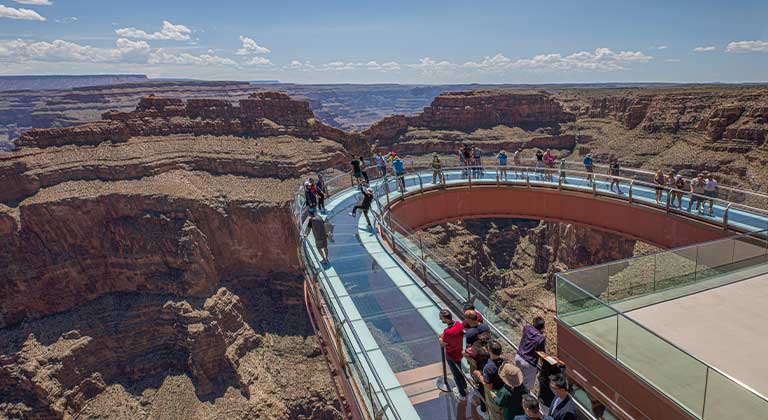
It is well-suited as a building material in many architectural contexts. In particular, laminated glass typically is used for floorings, walkways, staircases, doors, storefronts, guardrails, and other applications where catastrophic damage is not an option. In this article we will provide an overview of laminated glass.
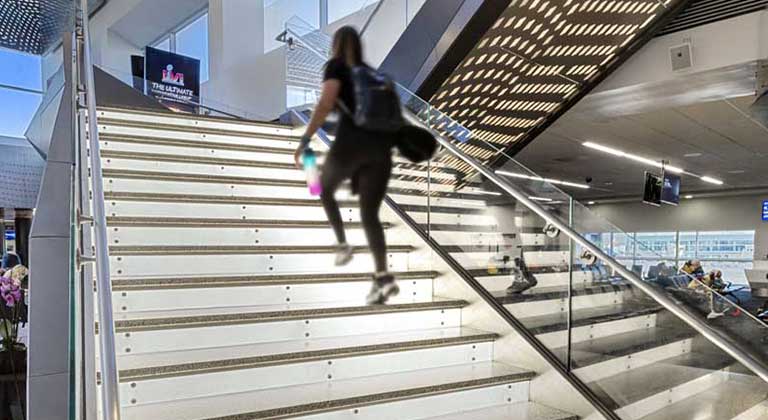
What is Laminated Glass?
Laminated glass is comprised of layered glass made of two separate pieces of glass bonded together by a laminated sheet placed between them. The glass pieces can be made from any type of glass. The laminated sheet is usually made of some form of polyvinyl butyral (or PVB) material.
Compared with traditional glass, laminated glass is safer due to the way that it breaks.
Traditional glass shatters into thousands of sharp pieces that scatter everywhere. Laminated glass doesn’t scatter as much, if at all. Instead, it cracks into many pieces that mostly stay in place.
The laminated film in between helps keep laminated glass in place even after breaking. It also helps prevent the glass from breaking in the first place. Laminated glass can also help to reduce sound and lessen UV ray interference.
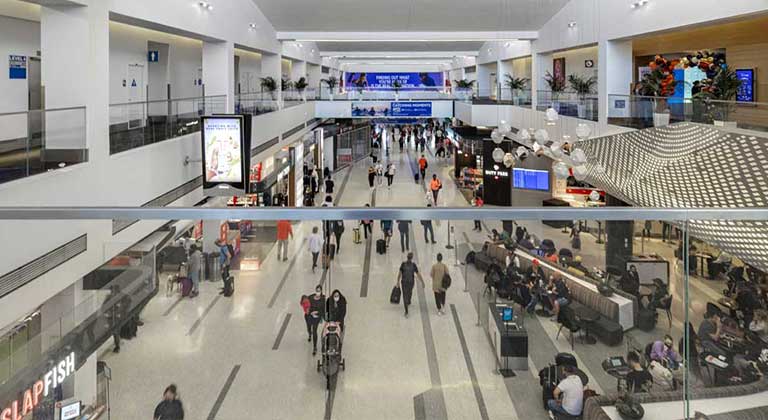
Production Process
Factories produce laminated glass by adhering two sheets of ordinary glass using a PVB resin glue. They then heat, press, and seal them together to make a permanent bond. The interlayers support and hold the glass to create a strong, uniform layer, even when broken.
The entire process takes several steps:
- Selecting the right glass
- Washing and treating the glass
- Laminating
- Compressing and heating the layers
- Verifying the quality
Before a manufacturer can turn two sheets of glass into laminated glass, they must carefully examine and select sheets of glass that are suitable for the process.
Sometimes small chips or irregularities occur in the manufacturing process, and such pieces are not acceptable for lamination. In addition to traditional glass, laminated glass may also be made of other varieties of glass, such as tempered glass, reflective glass, or heat-treated glass.
Once suitable glass has been selected, it needs to be washed and treated before lamination. Just a small amount of dirt or oil can make it more challenging for the adhesive to stick effectively to the glass.
Lamination is the central step in the production process. This step needs extreme precision, and takes place in a temperature-controlled clean room.
After lamination, the glass sheets are compressed and heated to bond them and to remove air bubbles. Here again, temperature and atmospheric conditions need to be tightly regulated.
Because of its status as a form of safety glass, quality control and certifications are crucial steps in the glass laminating process.
There are several certifications for laminated glass, covering properties such as hardness, thickness, and its treatment process. These properties are abbreviated and referred to, as follows:
- “AN” indicates annealed glass
- “HS” indicates heat-strengthened glass
- “FT” indicates tempered glass
- “CS” indicates chemical-strengthened glass.
Additionally, safety glass of all kinds is classified by how well it adheres under certain kinds and amounts of stress. Testers use a heavy pendulum to simulate an actual attack.
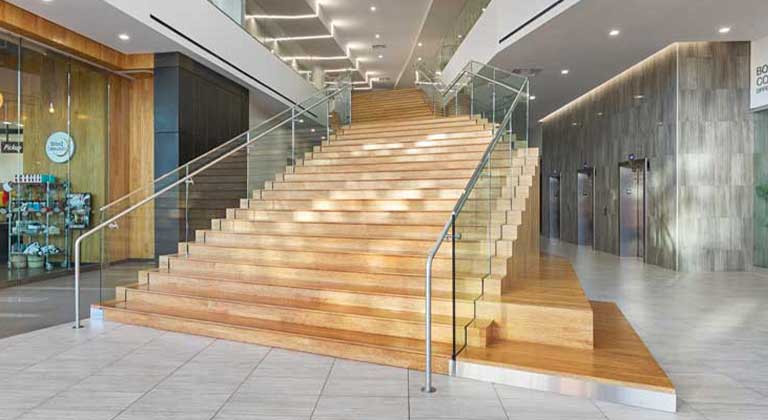
Applications and Benefits
Laminated glass has numerous and diverse architectural applications. It also provides other benefits that make laminated glass a superior building material in many situations:
- Sound reduction
- UV ray insulation
- Thermal insulation
- Safety
- Security
- Bird-friendly glazing
- Fire resistance
- Decorative purposes
Laminated glass is effective at reducing the volume of external noises. Sound reduction is measured by Sound Transmission Rating, (“STC”), and scores can range from 0 to 100, with 100 representing complete soundproofing. Laminated glass can provide an STC rating of 40 or more.
Laminated glass is also UV resistant, and can block 99% of UV light transmission. This is important, as skin cancer affects more than 3 million Americans each year.
Laminated glass is also effective for thermal insulation in buildings, helping to keep internal temperatures consistent in areas where external temperatures vary greatly and are very cold or very hot.
As mentioned above, laminated glass breaks safely, making it a smart choice in contexts where shattering would be dangerous. Particularly strong varieties are bullet resistant, and some building codes require this level of protection in certain municipal buildings.
Laminated glass is useful as a security feature because of the way it breaks. The laminate layer inside is extremely strong, meaning would-be attackers or vandals would be unable to easily break through shatterproof glass in the way they would with ordinary glass. In some cases, the safety factor is needed for protection and durability reasons, such as in airports, in guardrails and on glass staircases.
Laminated glass can be one solution to preventing bird collisions. By including a layer of glass that has been treated — i.e. with etching, coating, film, or a frit pattern – glass can become less reflective and more visible to birds, in ways that range in visibility to the human eye.
A building’s resistance to fire can be improved through the use of fire-rated laminated glass. Sometimes mandated by building codes, for example in school construction, fire-rated glass can be created by laminating several layers of substances between layers of glass, guaranteeing fire resistance for specified numbers of minutes.
Lastly, laminated glass is sometimes used for purely decorative purposes. Placing an inner layer between two lites of glass with film or coating can produce a final glass surface with patterns, color, written content, photography or anything else conceived by designers. See an especially creative example using underwater photography as an inner layer in laminated glass in the Aquarium of the Pacific, Long Beach, CA, installed by Giroux Glass.
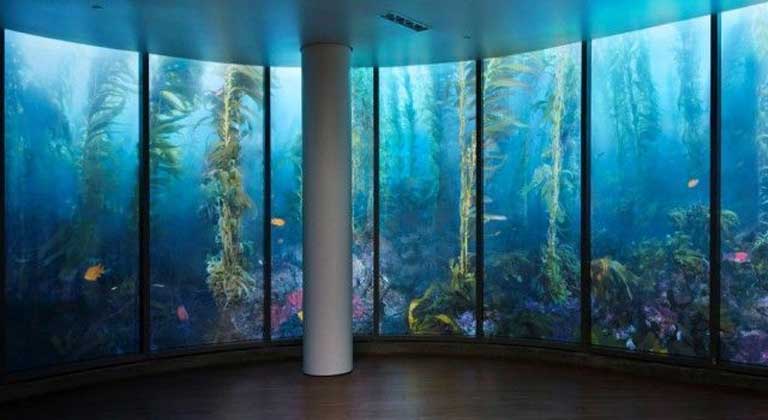
Advanced Laminated Glass Technologies
Glass continues to develop and improve as much as any other type of technology. Laminated glass can be made from traditional glass or from other new types of advanced glass technology.
Smart glass is glass that can adjust the level of light that passes through it. Also called privacy glass or switchable glass, this type of glass can appear opaque, translucent, or transparent, depending on your need, and controllable with the flick of a switch or programmed to change at scheduled times.
Electrochromic glass is a type of smart glass that can slowly tint to allow for shading or color to reduce the amount of sun, heat and/or glare to pass through. It uses a kind of special coating to enable this effect, and can be installed for either manual or electronic control
Another advanced technology is a suspended particle device. It works by using electrical flows to control tiny particles infused within the glass to adjust their opacity.
These advanced glass technologies are invaluable for energy efficiency and cost savings, and for quickly or automatically adjusting the type and level of light available. Another huge benefit is that they can prevent excess heat, light or glare from passing through windows without the use of curtains and without blocking or in any way obscuring the view. These advances enable the benefit of seeing the outdoors but without experiencing any of the potential negatives caused by exposure to high levels of light.
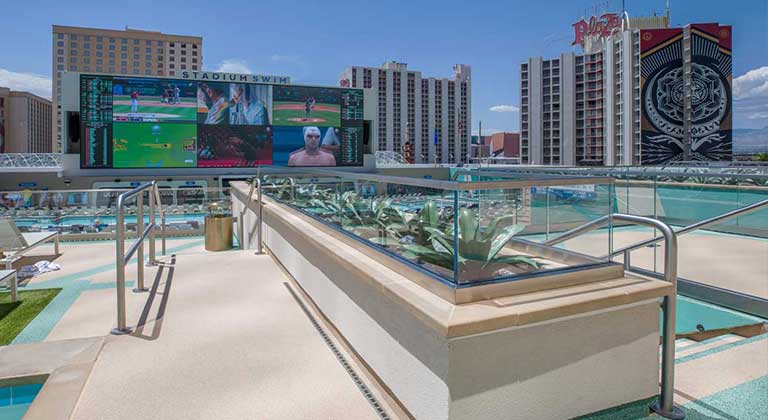
Maintenance and Care
Properly maintained laminated glass can last well over a decade.
Cleaning is simple: use warm water and a soft, non-abrasive cloth every one to two weeks. You can also use conventional glass cleaners for this purpose.
Conclusion
Laminated glass is a safe and effective material for a variety of applications. It provides durability and safety, while reducing thermal, sound, and UV ray interference.
Production of laminated glass consists of adhering two sheets of glass using a special adhesive before heating, pressing and bonding them together. During the process, manufacturers take great pains to ensure quality and consistency.
Recent advancements have created types of laminated glass that can adjust to permit more or less light through. This is particularly valuable for saving on energy bills and for saving curtain space. Future technological developments will likely only make laminated glass an even more useful material.
Need glass installed on your construction project? Giroux Glass has you covered.